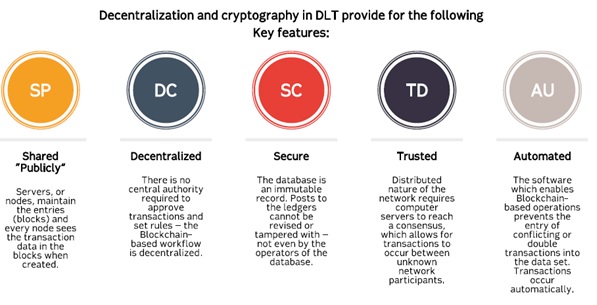As part of an effort to provide solid technical recommendations to support a robust and cost-effective Emissions Trading System (ETS) in Mexico, the “Preparation of an Emissions Trading System in Mexico” (SiCEM) project explored the use of Blockchain technology for an ETS Transaction Registry and other climate applications.
In light of the upcoming pilot phase of the Mexican ETS set to begin in 2020, GIZ’s SiCEM project has been conducting a series of activities, including the development of technical studies, to inform decision making around the design of the Mexican ETS.
The backbone of an ETS is its Registry, an online platform where ownership of emission allowances and offsets is precisely recorded, and all transactions take place under a set of market rules defined by the Authority. Regulated entities demonstrate compliance through the Registry: they upload their verified emissions inventory and surrender the allowances to match these emissions. ETS Registries are traditionally developed as centralized databases. Such arrangement supports the government’s ability to fulfill its role as the Authority. With the emergence of disruptive, decentralized and trust-building Distributed Ledger Technologies (DLTs) such as Blockchain, Mexico is exploring an innovative way of ensuring transparency and environmental integrity. This study reveals the pros and cons of this alternative.
A Blockchain is an immutable digital database that gradually builds up with blocks of data that cryptographically link together. Unlike conventional databases managed by a single authority, a Blockchain is managed by a network of distributed participants, each represented by a computer server. Servers authenticate record transactions according to a set of pre-defined rules, and a transaction is accepted and recorded only if consensus is reached among the network majority. This automatic, transparent and distributed decision making is trustworthy and eliminates the need for intermediaries (e.g., a central authority approving or denying certain transactions), thus facilitating the direct exchange between, for example, buyers and sellers of a commodity.
How can this be applied to the ETS Registry? Verified greenhouse gas (GHG) emissions, emissions allowances or offset credits can be tokenized – that is, issued as a cryptographic unit that represents a “right” to emit (emissions allowance or offset credit) or an “obligation” (verified emissions). Through smart contracts – another Blockchain feature – every ETS rule would be automatically enforced and tokens could be transacted among participants. Compliance would be achieved when “obligation” tokens are equivalent to “right” tokens in a certain wallet (user account). Using different layers, the system can be employed to perform other functions such as banking, borrowing or even allowance auctioning.

For a merely domestic (i.e., Mexican) ETS, a Blockchain-based Registry wouldn’t offer exceptional advantages over a conventional centralized database; oversight by the central regulator provides enough trustworthiness and immutability of the data records. However, in a world where emissions units will increasingly leave domestic territory and be transacted across jurisdictions and systems with different authorities (e.g., linking of ETS, transfer of internationally transferred mitigation outcomes [ITMOs] under Article 6 of the Paris Agreement, offset exchange with international aviation’s Carbon Offsetting and Reduction Scheme for International Aviation [CORSIA]), a trustworthy, immutable and decentralized Blockchain-based system would support increased interoperability and avoid double-counting of emissions reductions or allowances. Alternatively, hybrid approaches could be envisaged to incorporate the best from both a decentralized Blockchain and a centralized system.
Additionally, Blockchain could support other areas of the ETS compliance cycle, such as by lowering administrative transaction costs for smaller entities, increasing the scope of the ETS. Beyond the ETS application, the study explores its potential for improving emissions and financing Monitoring, Reporting and Verification (MRV) frameworks. It discusses the possibility for the tokenization of climate outcomes and the direct linking of finance flows to verified emission reductions.
The upcoming pilot phase provides an opportunity to test the Mexican ETS Registry infrastructure, be it Blockchain based or one built on conventional centralized database technology. Additional studies covering a variety of technical issues will be published on the “IKI-Alliance Mexico” blog in the coming months.
For more information, please contact us at: Comercio.Emisiones-MX[AT]giz.de
Click on the image below to download the publication:

